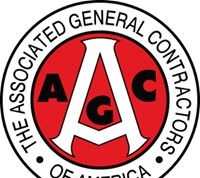Serious mortgage delinquency rates stabilize in U.S. metro areas, but share of loans in foreclosure grows
Latest data from all 366 U.S. metro areas indicate properties lingering in foreclosure inventory
Foreclosure-Response.org is a joint project of the Local Initiatives Support Corporation, Urban Institute and the Center for Housing Policy.
WASHINGTON, DC – August 17, 2011 – (RealEstateRama) — Serious delinquency rates for mortgages continue to stabilize across the largest 100 U.S. metropolitan areas, though they remain at historically high levels according to the latest data from Foreclosure-Response.org. Serious delinquency, defined as the share of loans in foreclosure plus the share of loans delinquent 90 or more days, fell 10% from the peak in December 2009 through March 2011. The 90+-day delinquency component of the figure fell from 5.5% of the mortgage market to 3.9% over the same period. However, the share of homes in foreclosure continues to rise, increasing 12% in that period.
“The nation’s foreclosure problems are far from over,” commented Urban Institute Research Associate Leah Hendey, a researcher on the project. “The data clearly demonstrate that communities across the country need strong policies to set families and neighborhoods on the course to recovery.” Because the volume of foreclosure starts has not grown significantly, growth in the foreclosure inventory indicates that properties are not exiting the foreclosure process.
“In some states, foreclosure processes are excessively slow, while in others they are too rapid,” said Jeffrey Lubell, executive director of the Center. “Waiting too long to finalize a foreclosure prolongs recovery for borrowers and neighborhoods, but pursuing foreclosures too quickly shuts down real opportunities to save homes. Both trends contribute to the destabilization of communities.”
Foreclosure backlog is particularly acute in the housing markets of many metro areas in N.Y., the state with the longest average foreclosure process. Metros in the Pacific Northwest are also bucking national trends with rising serious delinquency rates.
The Foreclosure-Response.org data—released quarterly by the Local Initiatives Support Corporation (LISC), Urban Institute and the Center for Housing Policy—provides numbers for the housing markets of all 366 U.S. metro areas. New findings in this edition include an analysis of the relationship between unemployment rates and serious delinquency rates, and regional comparison of those statistics.
Key findings from the March data:
- Although the rate of serious mortgage delinquencies has been stabilizing in the vast majority of metropolitan areas, the foreclosure rate continues to rise. On average, the serious delinquency rate (which consists of loans that are 90+ days delinquent and/or in foreclosure) is historically high but no longer rising. The continued rise in the foreclosure rate, however, indicates that properties may be lingering in foreclosure for an extended period of time and delaying recovery for both households and communities.
- Since the national peak in December 2009, just 12 of the country’s 100 largest metro areas saw the serious delinquency rate increase. Five of these are in New York, the state with the longest foreclosure process—suggesting that the increases there may be the result of loans lingering in foreclosure for an extended period of time. Other large metro areas where serious delinquencies rose include Seattle; Portland, Maine; Portland, Ore.; Madison, Wis.; Philadelphia, Pa.; Tulsa, Okla.; and Bridgeport, Conn..
- High rates of serious delinquency and unemployment cause double trouble for some metro areas, particularly in Fla., Calif., and Nev. For the first time, Foreclosure-Response.org has found a positive correlation between unemployment numbers and serious mortgage delinquency rates in U.S. metro areas. Metropolitan areas that have traditionally had strong residential construction industries face a combination of double-digit unemployment rates and high rates of foreclosures and mortgage delinquencies. The unemployment and serious delinquency combination also presents significant problems, although somewhat less severe, in metro areas like Youngstown, Ohio; Memphis, Tenn.; and Detroit. Metro areas in Texas and the Central Plains are among the least affected.
The new data are the latest in a series of quarterly data, released by the Foreclosure-Response.org team first in late 2010, that provided the first-ever data on serious delinquency rates for all 366 U.S. metros.
More detailed analysis about the largest 100 metropolitan areas, information on the methodology, and a complete ranking of all 366 U.S. metropolitan areas are available at: Foreclosure-Response.org
###
About Foreclosure-Response.org
Foreclosure-Response.org is a joint project of the Local Initiatives Support Corporation, Urban Institute and the Center for Housing Policy. The site provides data on foreclosures at both the metro area and local levels, as well as information on promising state and local policies for preventing foreclosures and stabilizing communities impacted by foreclosures.
Foreclosure-Response.org is funded through grants from the Ford Foundation, Annie E. Casey Foundation and Fannie Mae.
Contact:
Blake Warenik, National Housing Conference and Center for Housing Policy
202.466.2121 (ext. 240) or














